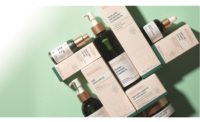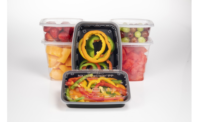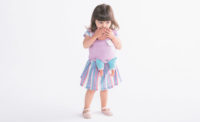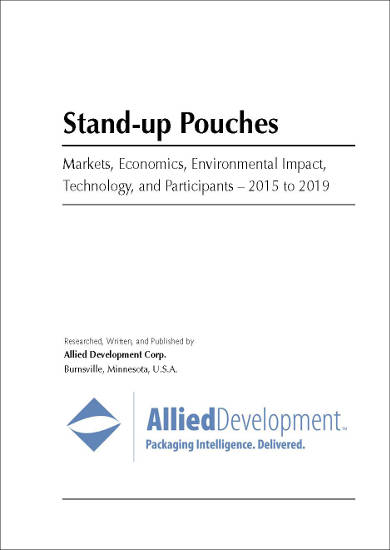The beauty of packaging is that it is always evolving to meet the needs of brand owners and consumers. While countless innovations are introduced each year, many of these advances are subtle in materials or processes that are not obvious to the observer’s eye. Nonetheless, packaging innovations represent real progress across the industry.
Observers need only look at the evidence of these innovations as represented by winners of the recent Dow Packaging Innovation Awards. The winners represent some of the most innovative packaging breakthroughs in technology, user experience and responsible packaging. This year, the contest drew nearly 250 entries from 30 countries. Of those, nearly half the award winners represent the flexible packaging segment, the fastest-growing and, arguably, most innovative segment of the industry.
“When we say innovation, we are really looking for solutions,” says David Luttenberger, global packaging director for Mintel and lead judge for the Dow Packaging Innovation Awards. “I think our industry is so caught up in disruptive innovation, things that will go on the shelf that consumers can’t help but notice because they’re different. But that doesn’t always mean that is what the consumer is looking for.”
He explained that the judges spent more than three 10-hour days exploring how each particular packaging innovation could benefit consumers to make their lives easier or safer. Not only that, the judges also considered how the package could add efficiency into the entire packaging and retail supply chain.
Winners ‘Earn’ Recognition
“There are a lot of great competitions out there,” Luttenberger says. “You don’t win a Dow award, you earn it.”
The highest honor, the Diamond Award, went to Dai Nippon Printing Co., Ltd., Packaging Division’s DNP Functional Film Complex PET plastic bottle. The bottle is designed to deliver the functionality of glass without the drawbacks of breakability, costly shipping and recycling contamination. The DNP bottle is lightweight, recyclable and virtually unbreakable, all with a glass-like luxury look. In addition to the Diamond Award, the judges also selected eight Diamond Finalists, 10 Gold Award Winners, 12 Silver Award Winners and two Honorable Mentions.
It’s no surprise that so many winners were in flexible packaging and that many of those awards were related to improved sustainability. The growth of flexible packaging is reflective of what’s happening around the world. Brands believe they have to get out of rigid plastics because of consumer pressure.
The flexible packaging industry has the greatest challenges and opportunities right now, Luttenberger says. “The flexible packaging industry recognizes that if it doesn’t step up to the plate to innovate and create materials and structures that ultimately can be curbside recyclable, they are going to be in trouble in a few short years. We know we have to develop next-generation flexible packaging so it can be recycled.”
Pouch Offers Safety, Savings
One flexible packaging winner is a pouch developed by ProAmpac for L’Oreal’s REDKEN Flash Lift Bonder, a hair-bleaching product used by stylists. The pouch was a finalist for the Diamond Award. The newly designed spouted flexible pouch gives users a portable, useful alternative to multiple rigid containers.
According to Daniel Fortunato, global marketing manager at L’Oreal, many professional hair stylists are quite mobile, taking the product with them to multiple locations where they work. Previously, the bleaching product was sold in three heavy plastic tubs that needed to be combined with a liquid developer. L’Oreal was able to reduce the three-step process to two steps, combining additives to form a powder that can be dispensed from the pouch. This reduced the amount of plastic material required, while making the product safer and easier for stylists to handle, he says.
Andrew Bowden, product development manager at L’Oreal, says pouring a powder requires a wide spout. The unique curved spout prevents powder fumes and guides product into the easy-open lid that doubles as a measuring cup for added convenience.
The chemicals also require the pouch’s aluminum and polyethylene structure to have high barrier properties that ensure user safety and long shelf life. Bowden says L’Oreal partnered with ProAmpac to develop the premade pouches after extensive distribution testing and development of new packaging processes. The pouches are filled and sealed at a contract packager.
The metallic look of the pouches adds to the premium aesthetic of the product, he says, making it stand out from commoditized competitive products.
Another innovation is the OpTri bottle, designed and developed by Danone Nutricia Research, for tube feeding products that are prescribed to patients who cannot eat or swallow independently and need to be fed via a tube. The technological features of the semi-rigid, semi-flexible bottle reduce the risk of contamination because it allows for gravity to collapse the bottle without the need of air inlet.
OpTri was created in collaboration with patients, caregivers, parents and health care professionals. The OpTri bottle saves time for users and is easier to use thanks to its ergonomic shape, integrated big-eyed hook, easy-to-navigate label and non-detachable flip-top cap. The OpTri bottle is also better for the planet; it is recyclable, and manufacturing of tube feeds packaged in OpTri allows for 85 percent reduction of water use and 21 percent reduction in CO2 emissions compared to current pouch packaging.
“Look at all the things going on with this bottle,” Luttenberger says. “When you first look at it you may say ‘Eh, what’s this?’ But when you see all the functional elements, all the environmental benefits and the consumer convenience, it checked a ton of criteria. It’s an amazing piece of technology.”
Werner & Mertz GmbH and Mondi Group developed the sustainable, 100 percent polyethylene (PE) Frosch pouch to replace its previous multi-material flexible packaging for various products. The new mono-material PE film was developed to be 100 percent recyclable by eliminating barriers (like EVOH) and adhesives that can prevent recyclability. Refilling an existing Frosch-bottle by using this pouch saves up to 70 percent material.
The front printed piece is not recyclable and can be peeled off and disposed of separately, Luttenberger says. While the pouch is technically recyclable, it currently is not acceptable in most communities’ single-stream recycling programs. However, Luttenberger says, he believes the goal was to get consumers thinking about what they might have to do in the future to make a package truly recyclable.
The Alico S.A. ReciPack is a recyclable, large-volume flexible pouch made of 100 percent polyethylene. The stand-up pouch can hold large volumes of product and provides a recyclable packaging option that optimizes features such as puncture resistance and rigidity to maintain function and aesthetics, together with its high gloss and printing aptitude. It combines a handle for easy pouring and a recloseable spout.
C.I. TAKIRON Corp. has developed a new and innovative SANZIP Sensory zipper that consumers can hear and feel. By providing a unique and premium action that differentiates itself from standard closures, the sensory zipper range uses both sound and touch sensations to aid and improve the closing experience of the product. The SANZIP sensory range adds something unique to the portfolio, assisting in meeting increased demand for re-sealable packaging with zip locks. Luttenberger adds that convenience continues to play a big role in packaging. Many consumers struggle to align zippers. He points out that people can use the SANZIP without having to look at it and auditory and tactile confirmation that it is closed.
Huhtamaki PPL Ltd.’s Bag-in-Bag pouch is designed to protect granular free-flowing products from spilling, impact and extreme handling with an inner poly liner that stretches to absorb shocks, a K seal at the bottom and side gussets reinforced with nylon for high impact and drop resistance. Alternatively, it makes room for multiple compartments within the pouch for brands to push complimentary products to consumers as part of sales promotions.
Luttenberger says this pouch essentially is a double bag. It has an Inner bag attached but suspended inside the outer bag. This can acts as a shock absorber to take the force of a high drop. It won for its clever configuration.
Tide has reimagined its 50+ year old detergent with a breakthrough Eco-Box packaging designed specifically for e-commerce and shipping directly to consumers’ doorsteps. Tide’s Eco-Box revolutionary packaging is 60 percent less plastic than the equivalent bottle (150 oz) and contains an ultra-concentrated formula. On top of having less packaging, Eco-Box doesn’t require any secondary re-boxing or bubble wrap. The Eco-Box also delights consumers with a no-drip tap that is easier to use and less messy than other liquid packaging.
The bag-in-box is part flexible packaging. It is the best of what e-commerce has to offer in safely delivering a bulk liquid without spillage, Luttenberger says. In addition, it is familiar to consumers so they don’t have to be re-educated. This package met multiple criteria in multiple categories, he says.
Amcor’s pouch combines a matte finish, gloss print and paper-like texture in the premium, differentiated Full Moon Perdue Natural Look Pet Treats Pouch. The design elevates the user experience and aligns with the brand’s organic and premium positioning. This printing innovation helps the package deliver enhanced branding for authenticity, quality and differentiation to consumers shopping the crowded shelf of pet snacks.











